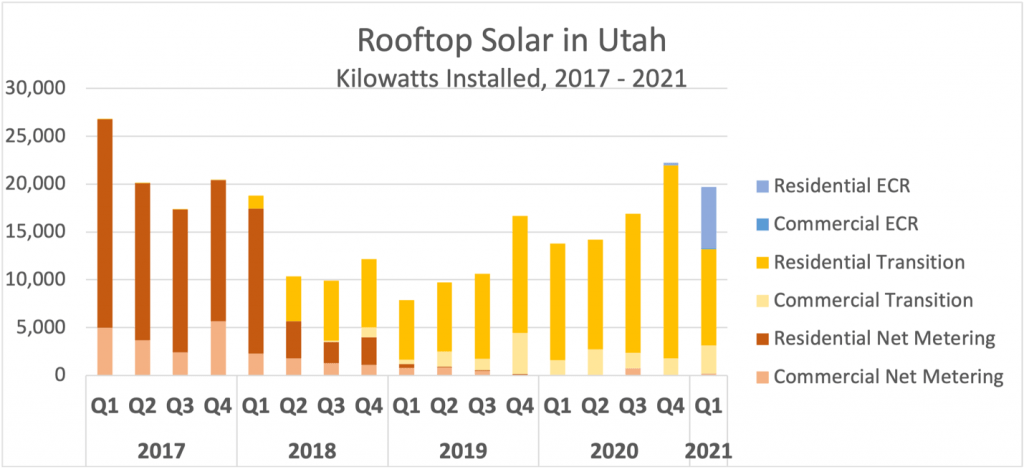In late 2020, Utah’s Public Service Commission created a new rate for solar customers, the “Export Credit Rate” (or ECR). The ECR applies to all energy exported from a rooftop solar array to the grid (currently valued at 5.817 cents per kWh in summer and 5.487 cents per kWh in winter.)
When the Utah Public Service Commission approved the ECR, they also chose to update the ECR on an annual basis – despite Utah Clean Energy’s strong opposition. The updated ECR value will apply to both current customers on the ECR rate and to new solar customers.
If the rate must be updated annually, Utah Clean Energy fought to ensure that the methodology used to calculate the ECR remains consistent from year to year to provide stability for solar customers. To that end, the PSC has approved an ECR annual update process that should result in a straightforward re-calculation of the ECR with current-year data, rather than a re-litigation of the rate itself.
Annual Update Timeline & Process
- The new, updated ECR will go into effect on March 1 of each calendar year.
- Rocky Mountain Power will file the new ECR rate, including supporting data and inputs, 30 days in advance of March 1, and other parties will have 15 days to review RMP’s filing.
- The PSC also required RMP to provide advance notice (by December 1 of the prior year) if they plan to use any inputs that haven’t already been presented in a public forum. That gives UCE and other parties time to look into potential changes before RMP files the annual update. This strikes a balance between the need for a quick and efficient update process and the need for time and transparency to perform an adequate review of the filing.
The annual update should only contain “routine” updates, and substantive changes to the way the ECR is calculated cannot take place as part of the annual update process. As one example of a routine update, the 2022 ECR will be based on data from the 2020-2021 calendar year, whereas the current ECR uses 2019 data. Any updates that are considered “non-routine” will have to be addressed through a separate petition to the PSC.
The Export Credit Rate’s Impact on Utah’s Solar Market, So Far
We anticipated that a lower ECR would result in lower solar adoption, and we have just received data that shows how significantly Utah’s solar market has been affected by the new rooftop solar rate. In Q1 2021, the first full quarter of the ECR, rooftop solar adoption has fallen by nearly 60% compared to the Transition Program in 2020. The chart below illustrates solar adoption under Net Metering (red) in 2017, the Transition Program (yellow) from 2018 through late 2020, and the Export Credit Rate (blue).

Comparison: Transition & Export Credit Rate
| Transition Program | Export Credit Rate | |
| Average residential system size: | 7.24 kW | 6.98 kW |
| Commercial vs Residential | 99.4% Res / 0.6% Comm. | 98.5% Res. / 1.6% Comm. |





